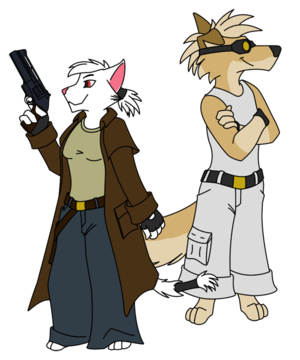Difference between revisions of "Furries"
m (removed Stub tag - this page is good enough for its purpose, and can be expanded later if anyone has the desire) |
|||
| Line 1: | Line 1: | ||
| − | |||
| − | |||
{{factionbox | {{factionbox | ||
|factionname=Furries | |factionname=Furries | ||
Revision as of 16:09, 24 July 2011
| Furries | |
| Population (2015 rough) | unknown |
|---|---|
| Political Influence | Minor to Non-existant |
| Major Achievements | Liberty, 125 Liberatrix |
The most common types of Furries are Cat-people (mostly victims of the Catgirling Machine), Wolf-people (an early Boskonian attempt to create super-soldiers), and Rabbit people, but many other animals have their Furry counterparts in Fenspace.
The Cats of Paradise are a informal support group of some of the earliest known biomodded furries. They actively work to help others biomod themselves or talk them out of it depending on the situation. Also known for helping people that suffer from involuntary biomods. Their ranks contain a unusually large number of feline biomods, hence their informal name. They helped some former catgirl members to found 125 Liberatrix to help out catgirl victims and continue to quietly funnel supplies to them.
Due to the involuntary nature of their biomodification, the majority of the Catgirling Machine's victims have as little to do with the Furries as possible.[2]
The Extraplanetary Defense Force is a recognizable subset of the Furries.
Notes
- ↑ There are some theories that Furries show a surprising success rate at this because a strong non-human self image seems to help a person get what they want from a biomod. Many of these theories fail to explain the Senshi's success at completely-human biomodification and the Trekkies' success at biomodding into "alien" races, though, so more research is required.
- ↑ They never wanted to be furries in the first place, and they don't like associating with people who do want to be furries.
| |||||||||||||
| ||||||||||||||||||||

